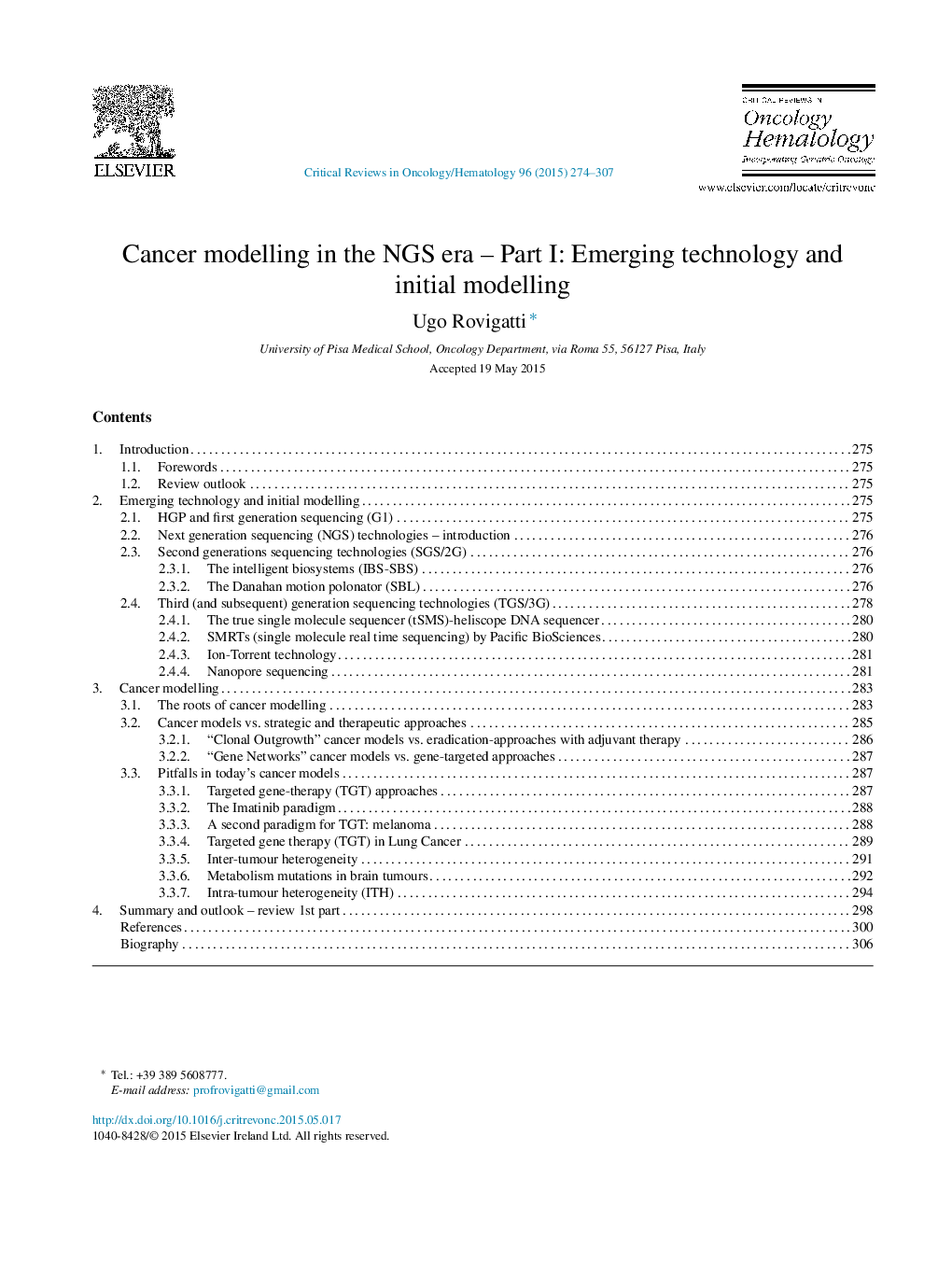| Article ID | Journal | Published Year | Pages | File Type |
|---|---|---|---|---|
| 3328661 | Critical Reviews in Oncology/Hematology | 2015 | 34 Pages |
•In this review 1st part, an overview of promising NGS is initially provided.•Cancer modelling from XIX/XX century hypotheses provided some prophetic models•2 of 3 cancer modelling phases (1 and 2) have influenced therapeutic interventions.•NGS technologies have the possibility to solve important pitfalls of today modelling.•Additional cancer models based on NGS will be presented in this review 2nd part.
It is today indisputable that great progresses have been made in our molecular understanding of cancer cells, but an effective implementation of such knowledge into dramatic cancer-cures is still belated and yet desperately needed. This review gives a snapshot at where we stand today in this search for cancer understanding and definitive treatments, how far we have progressed and what are the major obstacles we will have to overcome both technologically and for disease modelling. In the first part, promising 3rd/4th Generation Sequencing Technologies will be summarized (particularly IonTorrent and OxfordNanopore technologies). Cancer modelling will be then reviewed from its origin in XIX Century Germany to today's NGS applications for cancer understanding and therapeutic interventions. Developments after Molecular Biology revolution (1953) are discussed as successions of three phases. The first, PH1, labelled “Clonal Outgrowth” (from 1960s to mid 1980s) was characterized by discoveries in cytogenetics (Nowell, Rowley) and viral oncology (Dulbecco, Bishop, Varmus), which demonstrated clonality. Treatments were consequently dominated by a “cytotoxic eradication” strategy with chemotherapeutic agents. In PH2, (from the mid 1980s to our days) the description of cancer as “Gene Networks” led to targeted-gene-therapies (TGTs). TGTs are the focus of Section 3: in view of their apparent failing (Ephemeral Therapies), alternative strategies will be discussed in review part II (particularly cancer immunotherapy, CIT). Additional Pitfalls impinge on the concepts of tumour heterogeneity (inter/intra; ITH). The described pitfalls set the basis for a new phase, PH3, which is called “NGS Era” and will be also discussed with ten emerging cancer models in the Review 2nd part.
